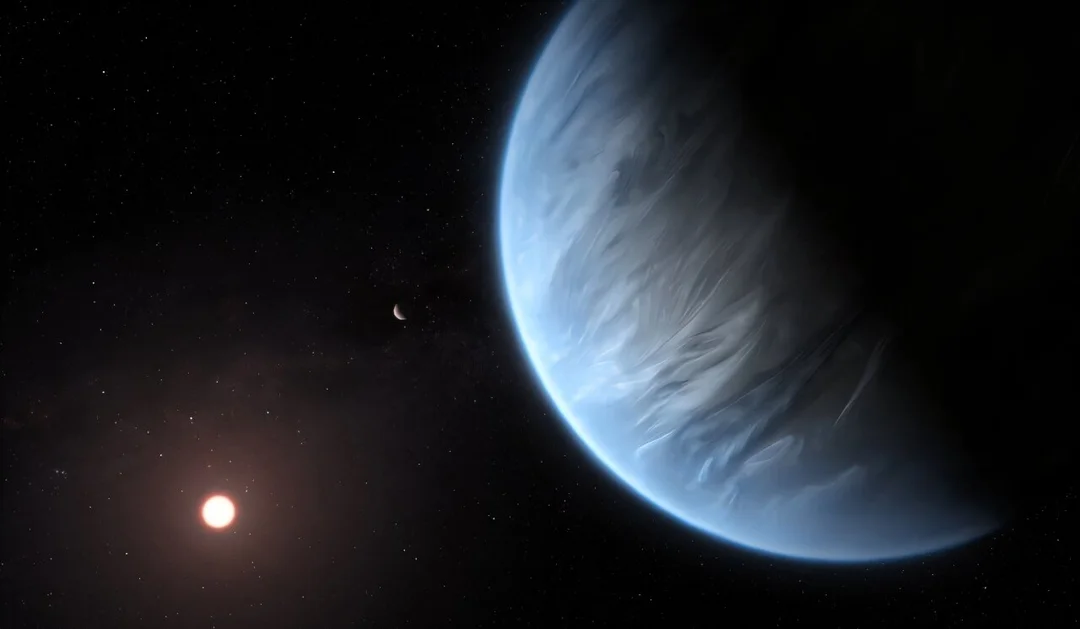
Exoplanet K2-18b: Hopes for Alien Life Dwindle as Doubts Arise – A Deep Dive
The tantalizing possibility of discovering life beyond Earth recently faced a harsh dose of reality as skepticism mounts regarding the potential biosignatures detected on exoplanet K2-18b. Dubbed a prime candidate for extraterrestrial life due to its potential for liquid water, initial excitement surrounding the detection of dimethyl sulfide (DMS) and dimethyl disulfide (DMDS) has been tempered by new analyses.

The Initial Discovery: A Spark of Hope
In April, astronomers using the James Webb Space Telescope ignited global interest by announcing hints of DMS and DMDS in K2-18b's atmosphere. These molecules, primarily produced by life on Earth, sparked hopes of a groundbreaking discovery. However, the researchers, led by Cambridge University's Nikku Madhusudhan, emphasized the preliminary nature of the findings, acknowledging a small chance of statistical fluke.
Independent Analyses Cast Doubt
Since the initial announcement, several independent teams have re-examined the data, yielding less optimistic conclusions. Former students of Madhusudhan, Luis Welbanks and Matthew Nixon, concluded in a recent preprint study that, using alternative statistical models, the "claims of a potential biosignature detection vanish." Their analysis expanded the range of possible chemicals that could explain the signals detected by Webb, suggesting that the initial findings may not be so conclusive. As Welbanks put it, "When you detect everything, did you really detect anything?"
Adding to the growing skepticism, a team led by Rafael Luque at the University of Chicago combined Webb's near-infrared and mid-infrared observations of K2-18b, finding “no statistical significance for DMS or DMDS.”
The Challenge of Exoplanet Observation
The quest to identify life on distant planets is fraught with challenges. Planets like Jupiter are visible with the naked eye because they reflect so much sunlight, but a planet like K2-18b is invisible to not only the naked eye, but to conventional telescopes. Astronomers use various techniques in combination with our most sophisticated telescopes, such as the James Webb Space Telescope, to glean snippets of information about these distant worlds.
The Debate Continues
Despite the mounting doubts, Madhusudhan stands by his research, emphasizing the importance of robust debate and the scientific method. His team even released a preprint study expanding the number of analyzed chemicals to 650, with DMS still included among the most promising. However, he acknowledges that other chemicals, such as diethyl sulfide and methyl acrylonitrile, were also considered, though deemed less likely.
What’s Next for K2-18b?
The story of K2-18b is far from over. More data will be collected over the next year, potentially offering a clearer picture of its atmospheric composition. Renyu Hu at the Jet Propulsion Laboratory is set to release results from new near-infrared observations, promising substantially more data than previously available. Whether these observations will resolve the current ambiguities remains to be seen.
The Bigger Picture
Even if DMS is present on K2-18b, it's crucial to remember that it doesn't guarantee the presence of life. The chemical has been detected on a lifeless asteroid. However, the ongoing research highlights the potential of space telescopes to one day gather enough evidence to identify alien life from afar. Will these upcoming observations validate the presence of biosignatures, or will they further dim hopes for life on K2-18b?
Share your thoughts! Do you believe we are close to discovering extraterrestrial life? Leave your comments below.